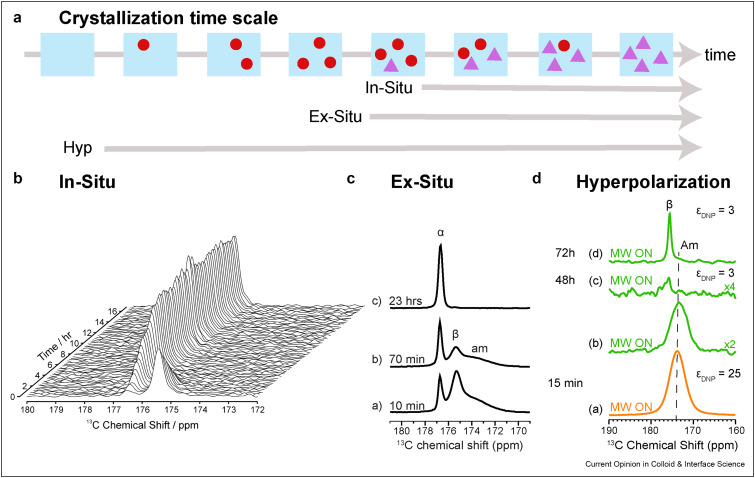Understanding the crystallinity of materials is crucial in industries ranging from pharmaceuticals to materials science. The degree of crystallinity in a material affects its properties, such as strength, stability, and solubility. For industries focused on quality and precision, having a reliable method for detecting crystallinity is invaluable. This article explores the significance of crystallinity analysis, methods for accurate detection, and recent advancements that have enhanced the accuracy and efficiency of these techniques.
Importance of Crystallinity Analysis
Crystallinity is a key structural characteristic that impacts a material’s physical and chemical properties. For example, in pharmaceuticals, the crystallinity of a compound can influence its solubility and dissolution rate, both of which are critical for drug efficacy. Likewise, in polymer and materials engineering, crystallinity can affect strength, flexibility, and thermal properties. A material with a high degree of crystallinity may be more rigid and heat-resistant, while a lower degree of crystallinity might indicate more amorphous regions, providing flexibility.
Crystallinity detection is not only essential for product quality but also for regulatory compliance in certain industries. Ensuring consistent crystallinity in manufacturing processes helps meet stringent quality standards and prevents variations that could affect product performance or safety. Developing accurate crystallinity detection methods, therefore, is fundamental in both research and quality assurance across various sectors.
Traditional Methods for Detecting Crystallinity
- X-ray Diffraction (XRD)
X-ray diffraction is one of the most common techniques for crystallinity analysis. XRD provides valuable information about the crystalline structure and degree of crystallinity in a sample. By analyzing the diffraction pattern generated when X-rays interact with a crystalline structure, scientists can determine both the presence and quantity of crystalline and amorphous phases in the material. - Differential Scanning Calorimetry (DSC)
DSC is widely used to measure the thermal properties of a material, providing insights into crystallinity by analyzing the heat flow associated with phase transitions. When a sample undergoes melting, the amount of heat absorbed can reveal the degree of crystallinity. Although not as direct as XRD, DSC is useful for materials that undergo well-defined thermal transitions. - Fourier Transform Infrared Spectroscopy (FTIR)
FTIR is used to assess molecular vibrations, offering indirect information on crystallinity by analyzing changes in specific functional group frequencies. FTIR spectroscopy is particularly effective in studying polymers and other organic compounds, as certain functional groups exhibit distinct spectra based on the crystallinity level.
These traditional methods have been reliable for detecting crystallinity; however, they come with limitations in terms of sensitivity, sample preparation, and time. Emerging techniques and method enhancements aim to address these challenges, providing more efficient and accurate results.
Crystallinity Detection Method Development
In recent years, significant advancements have been made in crystallinity detection methods, improving both the sensitivity and efficiency of these analyses. Advanced detection systems now allow researchers to analyze smaller sample sizes and obtain higher resolution data, which is particularly useful in fields such as pharmaceuticals and nanotechnology. Enhanced crystallinity detection method development offers scientists tools that are faster, more accurate, and better suited to high-throughput environments.
By incorporating these improved methodologies, labs can minimize errors and obtain consistent results, even with complex samples. For instance, combining XRD with complementary techniques, such as Raman spectroscopy, has proven effective for detailed analysis, especially when studying multi-phase materials or samples with low crystallinity levels.
Benefits of Modern Crystallinity Detection Techniques
- Improved Sensitivity and Resolution
Advanced crystallinity detection techniques offer improved sensitivity, allowing researchers to detect minor crystalline or amorphous regions that traditional methods might miss. Higher resolution also facilitates better differentiation between phases, enabling more accurate characterization of heterogeneous samples. - Reduced Sample Preparation
Many newer detection systems are designed to require minimal sample preparation, which helps reduce analysis time and prevents sample degradation. This advantage is particularly beneficial for temperature-sensitive or volatile samples that could be altered during extensive preparation. - Integration with Analytical Software
The latest crystallinity detection methods often include integration with advanced analytical software, enabling researchers to process and analyze data with greater ease. This integration enhances data accuracy, ensures reproducibility, and allows for automated reporting, making the process more streamlined for quality control teams and research labs alike.
Applications of Crystallinity Detection in Industry
The demand for crystallinity detection spans several industries due to its impact on material performance and safety. In pharmaceuticals, for instance, accurate crystallinity measurement is essential for developing effective drug formulations and meeting regulatory standards. Material scientists also rely on crystallinity analysis to develop stronger, more durable polymers and composites. Additionally, in the electronics industry, crystallinity detection is vital for developing semiconductor materials with precise electrical properties.
Industries that prioritize product quality and innovation can leverage advancements in crystallinity detection to optimize material performance. With access to high-precision methods, companies can ensure that their materials meet the required specifications, ultimately enhancing product consistency and safety.
Challenges in Crystallinity Detection
While modern crystallinity detection techniques have improved, some challenges remain. For instance, differentiating between crystalline and amorphous regions in multi-phase samples can still be difficult, requiring complementary methods for accurate characterization. Furthermore, instrument calibration and method standardization are essential for ensuring consistent results across different laboratories and studies.
Addressing these challenges requires ongoing research into crystallinity detection method development. By focusing on optimizing detection systems and creating standardized protocols, researchers can continue to improve accuracy and reliability in crystallinity analysis.
Conclusion
Crystallinity detection has evolved significantly, offering industries and research institutions better tools for quality control and material analysis. By embracing advanced techniques, laboratories can achieve precise, reliable results that contribute to product safety, efficacy, and performance. As crystallinity detection methods continue to improve, industries can expect even greater precision and efficiency, supporting advancements in product development and regulatory compliance.
The future of crystallinity detection looks promising, with new techniques and tools making it easier than ever to analyze material properties. From pharmaceuticals to materials science, understanding and controlling crystallinity is essential to developing innovative, high-quality products that meet today’s demanding standards.







